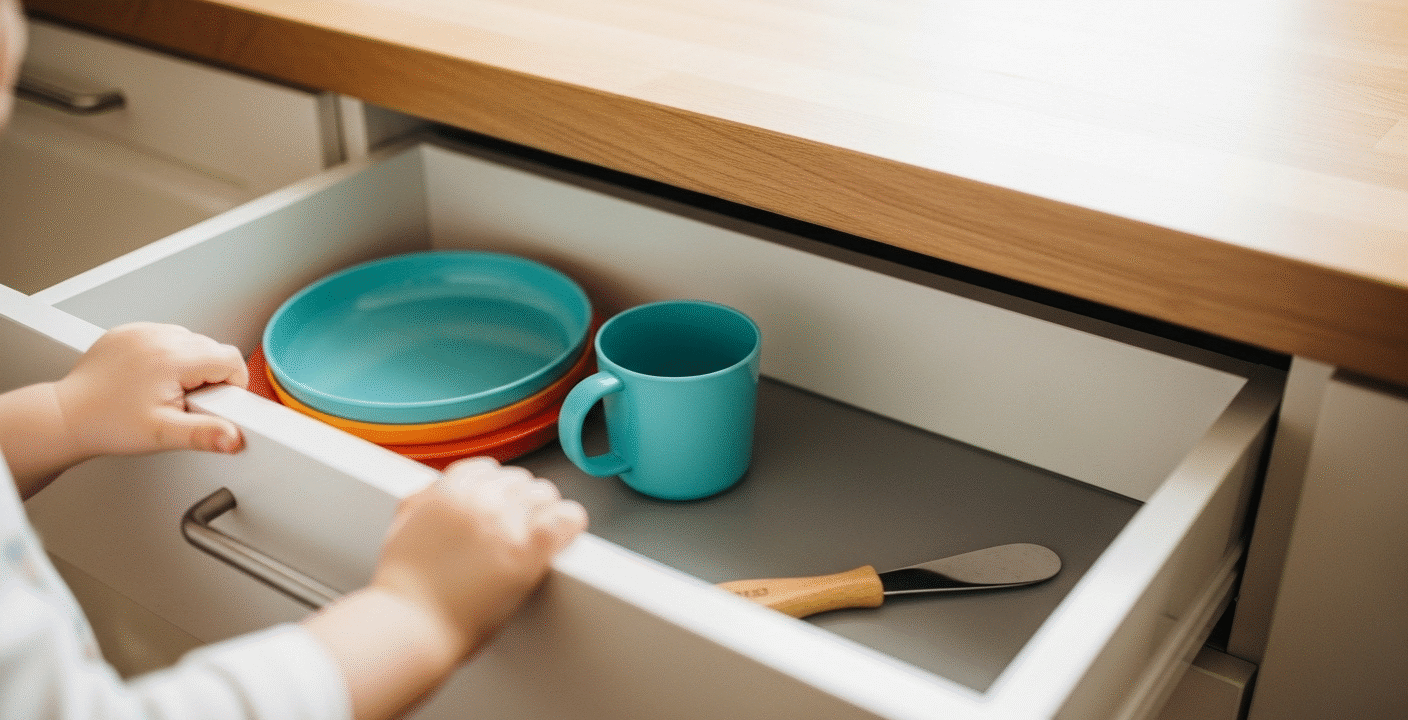The kitchen is the heart of the home, a place of nourishment, connection, and learning. But for our children, it can often feel like a land of giants, with everything out of reach. Transforming a section of your space into a kid-friendly kitchen is one of the most powerful ways to foster genuine independence and confidence. As a parent who has seen the profound impact of this firsthand, I can tell you that the goal isn’t just about keeping them busy; it’s about teaching valuable practical life skills and empowering them to take an active role in their own self-care.
This guide moves beyond generic tips to give you an actionable framework, grounded in principles of child development and safety, for creating a functional kid-friendly kitchen. We will focus on creating a space that not only invites kids in the kitchen but does so in a way that is safe, accessible, and truly empowering for them.
The Foundation: Accessibility and a “Yes” Space
The core principle of a kid-friendly kitchen is creating a “yes” space—an environment where your child can explore and participate with minimal need for you to say “no, don’t touch that!” This begins with making their daily essentials accessible.
- Designate a Low Cabinet or Drawer: This is the cornerstone of kitchen independence for kids. Clear out a single low cabinet or a deep drawer that is exclusively theirs. This is where they will find their own plates, bowls, cups, and utensils. When they are thirsty, they don’t need to ask you; they know exactly where to find their cup.
- A Station for Self-Service: Place a small, sturdy learning tower or a step stool at the counter. This allows them to safely reach the countertop to help with food prep or wash their hands at the sink. For younger children, a small table and chair set in the kitchen can serve as their personal workspace for snacks and activities.
- Snack and Water Accessibility: Designate a low shelf in your pantry or a specific bin in the refrigerator for pre-approved, healthy snacks. A small, lightweight water dispenser or a mini pitcher with a manageable amount of water allows them to pour their own drinks, which is a fantastic motor-skill-building activity.
Safety First: The Non-Negotiables of a Child-Safe Kitchen
Inviting your child into the kitchen requires a thoughtful approach to safety. Your goal is to create freedom within secure boundaries. This is the most crucial aspect of building trust and ensuring kitchen safety for children.
- Secure Dangerous Items: Use child-proof locks on all cabinets and drawers containing sharp objects, cleaning supplies, chemicals, and heavy appliances. This is a non-negotiable step.
- Appliance and Cord Safety: Keep appliance cords pushed to the back of the counter, and ensure there are no dangling cords they could pull on. Use outlet covers on all unused sockets. It’s also wise to teach the concept of “hot” and “cold” early on regarding the stove and oven.
- Choose the Right Tools: Equipping your child with appropriate tools is essential. Investing in child-safe kitchen tools like nylon knives for cutting soft fruits, crinkle cutters, and small, wooden-handled utensils sets them up for success and minimizes risk.
The “Zoning” Checklist for Your Kid-Friendly Kitchen
To make this process seamless, think in terms of “zones.” This approach, often used in a Montessori kitchen setup, creates a logical flow for your child.
- The Hydration Zone:
- Accessible cups.
- A small, lightweight water pitcher or dispenser they can manage.
- The Eating Zone:
- A low drawer or cabinet with their plates, bowls, and utensils.
- Child-sized forks and spoons they can handle easily.
- The Food Prep Zone:
- A sturdy learning tower or stool for counter access.
- A collection of child-safe kitchen tools: nylon knives, peelers, small whisks, and mixing bowls.
- The Cleaning Zone:
- A nearby bin for food scraps.
- A small dustpan and brush for cleaning up their own spills (an essential practical life skill).
- Accessible cloths or sponges for wiping their space.
By creating a thoughtfully designed kid-friendly kitchen, you are giving your child more than just access to snacks. You are giving them a sense of belonging, responsibility, and the deep, intrinsic satisfaction that comes from saying, “I did it myself.”
Disclaimer: This blog post is for informational purposes only. The user assumes all responsibility for creating a safe environment. Always supervise children in the kitchen and ensure all safety measures, including child-proof locks and appliance safety, are properly implemented.






